
Tips for Trouble-free Enjoyment of Your Carrier
RoofBag’s versatile
design fits cars
WITH rack ...
Installation
Booklet
RB2015
… or WITHOUT rack
Car Top Carriers
AVOIDING WATER ENTRY
Zipper must be fully closed and
protected by the flap:
1- Logo should be at the back.
2- Close zipper sliders all the way,
until they touch at the back of the
carrier.
3- Use carrier full if possible, to
keep zipper flap pointing down.
4- If carrier is not full, make sure
the zipper flap points down along
all 3 sides.
AVOIDING WATER ENTRY INTO
THE CAR
No-rack installation: over-tight
straps may deform the door seal
and allow rainwater into the car.
Loosen straps slightly when driving
through rain and loosen them
completely when leaving car
parked in the rain.
FILLING THE CARRIER
1- Use carrier full if possible to
avoid fabric damage caused by
wind flapping and to avoid water
entry through the zipper.
2- Cushion hard or sharp objects
inside bag with towels or blankets.
3- Distribute the weight evenly in-
side carrier to avoid denting the
roof.
LOOSE CREASES
Loose fabric creases cause noise,
lower gas mileage and damage the
fabric. Hold down loose creases
with straps. Use extra straps if nec-
essary.
STRAP ATTACHMENT
Rack installation: straps should be
attached only to strong side rails or
cross bars. Don’t attach straps to
rain gutter, roof edge, open hooks
or anything not intended to sup-
port heavy loads. Also, don’t attach
straps to RoofBag’s strap guides.
STRAP TENSION
Straps should be snug but not over-
tight. Over-tight straps can dent a
thin roof or damage the paint at
roof's edge. Check strap tension dur-
ing travel.
STRAP ANGLES
Follow the “Correct Strap Angles"
diagrams for optimum stability.
STRAP NOISE
If a strap whistles or
rumbles: unbuckle,
twist and re-buckle.
To avoid strap flapping
noise: wrap the free
end and tuck the tip
under the last turn.
COLD WEATHER
Fabric can get stiff at cold tempera-
tures. To facilitate zipper operation:
Lubricate zipper ahead of time with
silicone spray or gel and flip up the
flap corners when opening or clos-
ing the zipper.

Close carrier
1. Flip up corners of flap to facilitate closing
the zipper.
2. Close zipper on all three sides. Zipper
pullers should meet at the back. Leave no
gap between pullers to avoid water entry.
3. Flip down flap corners.
4. Zipper flap should point downward along
its entire length (sides and rear of the car-
rier), to avoid water entry.
Fill carrier
1. Fill carrier as full as possible.
2. Place more bulky items at the rear to
preserve the bag’s aerodynamic shape.
3. Cushion hard or sharp objects with tow-
els or blankets to avoid abrasion damage
to the carrier fabric.
4. Distribute heavy items evenly inside car-
rier to avoid denting the roof.
Prepare carrier
1. Place carrier on a clean roof and
(preferably) on a Protective Mat (sold
separately).
2. Logo should face the back of the car.
3. Front of carrier should be at least 8
inches behind front edge of roof.
4. Flip up the corners of the zipper flap and
open zipper on all three sides.
5. Open carrier completely like a clamshell
and fill carrier while on top of the car.
OVERVIEW
Page 2

Side Rails
Place carrier between
the side rails.
Carrier is flexible and
can be squeezed into
available space be-
tween side rails.
Cross Bars Far
Apart
Place carrier between
cross bars if enough
space is available.
Cross Bars Close
Together
Place front of carrier
right behind front cross
bar.
Carrier can ride over
rear cross bar.
If the car has both side rails and cross bars, a second pair of Rack Straps (purchased sepa-
rately) can be installed at right angles to the first pair, using the same 4 strap guides.
Each strap has 3 sections: Top Strap, Rack Short Strap, Rack Long
Strap.
1. Slide a Top Strap under 2 strap guides, left-right for side rails or
front-back for cross bars.
2. Repeat for the other Top Strap.
3. Attach other 2 sections to side rails or cross bars as shown and
connect buckles to the Top Strap until they click.
4. Repeat for the other strap
Side Rails or Cross Bars
Page 3

Cross Bars Very
Close Together
Use Pass-Through
Straps (No-Rack
Straps) as shown, in-
stead of Rack Straps.
Side Rails or Cross Bars (cont.)
Page 4

Each strap has 2 sections: Top Strap (shorter) and Inside Strap (longer).
1. Slide a Top Strap under 2 strap guides, left-to-right.
2. Open the front doors of the car, run the Inside Strap across the interior, and connect buck-
les to the Top Strap until they click.
3. Repeat for other strap.
Pull the free ends
of the straps to
tighten straps
snug, but not over-
tight.
Over-tight straps
may deform door
seal and allow rain-
water into the car.
2-door cars
Rear strap: should enter the car at
the top-rear corner of door frame,
and should slant down-forward.
Front strap: enter the car at least
8” in front of rear strap, and should
be vertical or slant slightly down-
rearward.
Optional Pillar Installation
(only for 11 c.f. carrier)
Install Top Straps first.
Connect one end of an Inside Strap
to a Top Strap, wrap it around the
pillar, as shown, go back up and
connect to the other Top Strap.
Install the other Inside strap
around the pillar on the other side
of the car, and adjust length as re-
quired.
Car or Van WITHOUT Rack
Page 5

Vans with side doors
Install straps through front doors
and side doors. Check for interfer-
ence with the side door closing
mechanism.
Note: You may need to purchase addi-
tional straps and join them end-to-end
to make longer straps.
Each strap is 142” long (Top Strap + In-
side Strap).
Van WITHOUT Rack
Page 6
Vans with rear side
windows that open
Install straps in x-pattern through
front doors and rear side win-
dows.
Note: You may need to purchase addi-
tional straps and join them end-to-end
to make longer straps.
Each strap is 142” long (Top Strap +
Inside Strap).
Vans or SUVs with
rear gate
Install straps in x-pattern through
front doors and rear gate or
trunk.
Note: You may need to purchase addi-
tional straps and join them end-to-end
to make longer straps.
Each strap is 142” long (Top Strap +
Inside Strap).

Each strap has 3 sections: Top
Strap, Hook Short Strap, Hook
Long Strap.
1. Slide a Top Strap under 2
strap guides, left-to-right.
2. Open the car’s doors and at-
tach one of the hooks onto a
hard ridge or lip about ½” wide
by ½” high, that should stick
down from the top of the door
frame inside the car. This ridge
may be covered with a plastic
molding or rubber seal. If ridge
is not there, or if it is too wide
or shallow, you can’t use hook
straps.
TEST: The hook should stay
firmly in place when pulling
the strap upward.
3. Close door over the strap.
Connect the buckles to the Top
Strap.
TEST: The strap should exit be-
tween the door and the frame,
and the hook should not be
visible from the outside.
4. Tighten the straps by pulling
from the free ends.
Check that the carrier is firmly held by the straps, that the straps are taut and that the
Hooks are tightly seated over the ridge and they stay in place even with the doors open.
NOTE: If your car does not have the required ½” ridge, or if the installation does not feel
tight and stable, use instead the Pass-Through Straps that come with the carrier.
Hook Straps (Sold Separately)
Page 7

CAUTION and DISCLAIMER
By using RoofBag’s car top carrier you agree to the following:
An improperly secured carrier can damage the car or fall off the car, potentially injuring others or damaging the
carrier, your belongings or other vehicles. The buyer is fully responsible for installing the RoofBag carrier securely.
The manufacturer has no control over the way the buyer installs the carrier, and therefore the manufacturer can-
not assume any responsibility for any damage or loss resulting from its installation. The instructions we provide
are intended to be guidelines for safe installation, and are based on our experience, our best judgment, and the
experience of many customers. However, the user has the ultimate responsibility for the security and safety of the
attachment. The manufacturer is not liable for any loss or damage caused by the carrier or its use, or for any indi-
rect, incidental or consequential damages resulting from the use or the fall of a RoofBag carrier, whether the car-
rier was defective or not. The manufacturer's liability is limited to the repair or replacement of a defective carrier
according to the warranty terms described at www.RoofBag.com.
If you don't agree with this policy, please return the carrier to RoofBag.com for a full refund.
If you need installation assistance, please call RoofBag: 800-276-6322 or 619-662-0495.
WARRANTY and RETURNS
Unused carriers can be returned within 30 days after purchase. A 2-year repair/replacement warranty covers:
fabric puncture or tear, fabric and seam water-proofness, failure of straps or buckles and zipper operation. Not
covered by the warranty: water entry into the carrier through the zipper, damage to the carrier caused by falls, ac-
cidents, improper installation, normal wear and tear, or failure of the car’s components used to attach the carrier.
Used carriers cannot be returned for a refund, but if defective, will be repaired or replaced. If you need to return
your RoofBag carrier, send email to Returns@RoofBag.com requesting a Return Authorization Number and in-
cluding your name, order number and reason for the return. For more details see Warranty/Returns page at
www.RoofBag.com.
or visit: www.RoofBag.com/FAQ.asp
Correct Strap Angles
Page 8
-
 1
1
-
 2
2
-
 3
3
-
 4
4
-
 5
5
-
 6
6
-
 7
7
-
 8
8
RoofBag CC-15-BK-RNR Owner's manual
- Type
- Owner's manual
- This manual is also suitable for
Ask a question and I''ll find the answer in the document
Finding information in a document is now easier with AI
Other documents
-
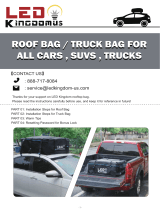 LEDKINGDOMUS 19cft Rooftop Cargo Bag User manual
LEDKINGDOMUS 19cft Rooftop Cargo Bag User manual
-
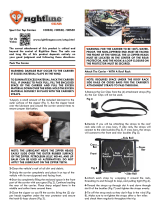 Rightline Gear 100S20 User guide
Rightline Gear 100S20 User guide
-
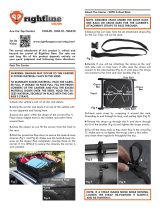 Rightline Gear 100A10 Installation guide
Rightline Gear 100A10 Installation guide
-
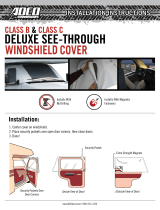 ADCO 2403 Installation guide
ADCO 2403 Installation guide
-
Thule 3201963 User manual
-
Opel Zafira Tourer 2018.5 Owner's manual
-
Opel Zafira Tourer 2018 Owner's manual
-
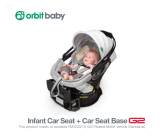 Orbit baby G3 User manual
Orbit baby G3 User manual
-
Thule Chariot Cheetah 2 Instructions Manual
-
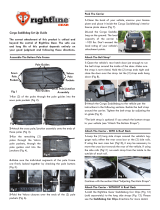 Rightline Gear 100B90 User guide
Rightline Gear 100B90 User guide













